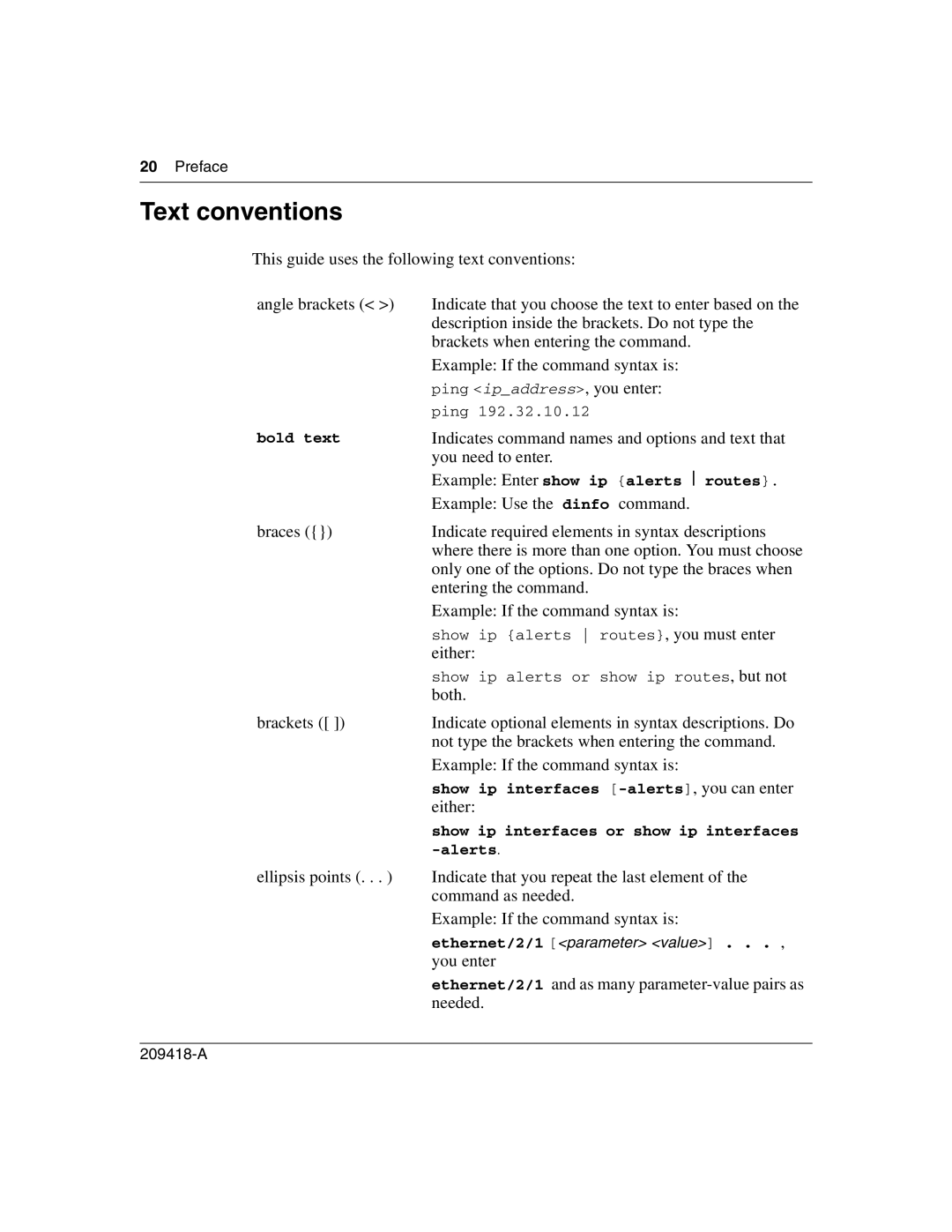
20Preface
Text conventions
This guide uses the following text conventions:
angle brackets (< >) | Indicate that you choose the text to enter based on the |
| description inside the brackets. Do not type the |
| brackets when entering the command. |
| Example: If the command syntax is: |
| ping <ip_address>, you enter: |
| ping 192.32.10.12 |
bold text | Indicates command names and options and text that |
| you need to enter. |
| Example: Enter show ip {alerts routes}. |
| Example: Use the dinfo command. |
braces ({}) | Indicate required elements in syntax descriptions |
| where there is more than one option. You must choose |
| only one of the options. Do not type the braces when |
| entering the command. |
| Example: If the command syntax is: |
| show ip {alerts routes}, you must enter |
| either: |
| show ip alerts or show ip routes, but not |
| both. |
brackets ([ ]) | Indicate optional elements in syntax descriptions. Do |
| not type the brackets when entering the command. |
| Example: If the command syntax is: |
| show ip interfaces |
| either: |
| show ip interfaces or show ip interfaces |
| |
ellipsis points (. . . ) | Indicate that you repeat the last element of the |
| command as needed. |
| Example: If the command syntax is: |
| ethernet/2/1 [<parameter> <value>] . . . , |
| you enter |
| ethernet/2/1 and as many |
| needed. |
